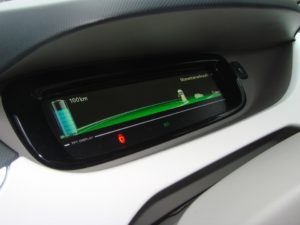In this video put together by the Greater Sacramento Economic Council, we learn how institutions such as UCDavis has worked on development in agricultural technological innovation. So much so that “Sacramento is changing how the entire planet thinks about growth and sustainability in the 21st century.”
Category Archives: Environment
Heatwave Causes Fluctuations in Sacramento Business
A lot of businesses in the region suffered more than just heat stroke during this most recent heatwave. CBS reports:
Development of Woodland City
 While it is taken almost four years to gain approval, now that everyone is on board, serious development of Woodland City is about to begin. The 2035 General Plan – that will be two decades in the making – will cost around $2 million.
While it is taken almost four years to gain approval, now that everyone is on board, serious development of Woodland City is about to begin. The 2035 General Plan – that will be two decades in the making – will cost around $2 million.
The document contains nine elements, comprising the main goals for the vision of the city to benefit the 57,000 residents there. Initially, various procedures will be undertaken to align zoning codes with new codes, will occur. This should take around two years. For the longer-term, issues connected to land use, housing, public safety, recreation, etc., will be brought up to date as well. The Climate Action Plan has been established to shake up the community’s commitment to sustainable and renewable energy as well as the reduction of pollution.
The main goal is for the Spring Lake development in Spring Lake to be completed before any other area of expansion is approved. Those living there – many of whom moved in during the Great Recession – have been waiting a long time for the completion of various local amenities. It is hoped that Spring Lake will be fully developed within the next decade.
Traveling Electrically
 The Sacramento Metropolitan Air Quality District has just launched its “Our Community, Car-Share Program” in three public housing complexes (Alder Grove, Edge Water and Lemon Hill). This will provide Sacramento residents in three public housing complexes with free access to electric vehicles.
The Sacramento Metropolitan Air Quality District has just launched its “Our Community, Car-Share Program” in three public housing complexes (Alder Grove, Edge Water and Lemon Hill). This will provide Sacramento residents in three public housing complexes with free access to electric vehicles.
Air Quality Engineer at the District, Steffani Charkiewicz explained that the enterprise was undertaken in order to “provide access to electric vehicles for these residents and to improve their quality of life. These vehicles will be available for short trips – a maximum of three hours at a time – and they’ll be able to go run errands, go to the grocery store, go to a doctor’s appointment, go to a job interview.”
Users will need to register if they want to take advantage of the two Kia Soul electric cars available in each neighborhood. It is hoped that it will make it easier for residents who are having an increasingly difficult time getting around the city since buses are expensive and less reliable.
Starting as a pilot program for a year, it is funded by California Cap-and-Trade which is donating over a million dollars. Other funds are coming from other municipal agencies in Sacramento.